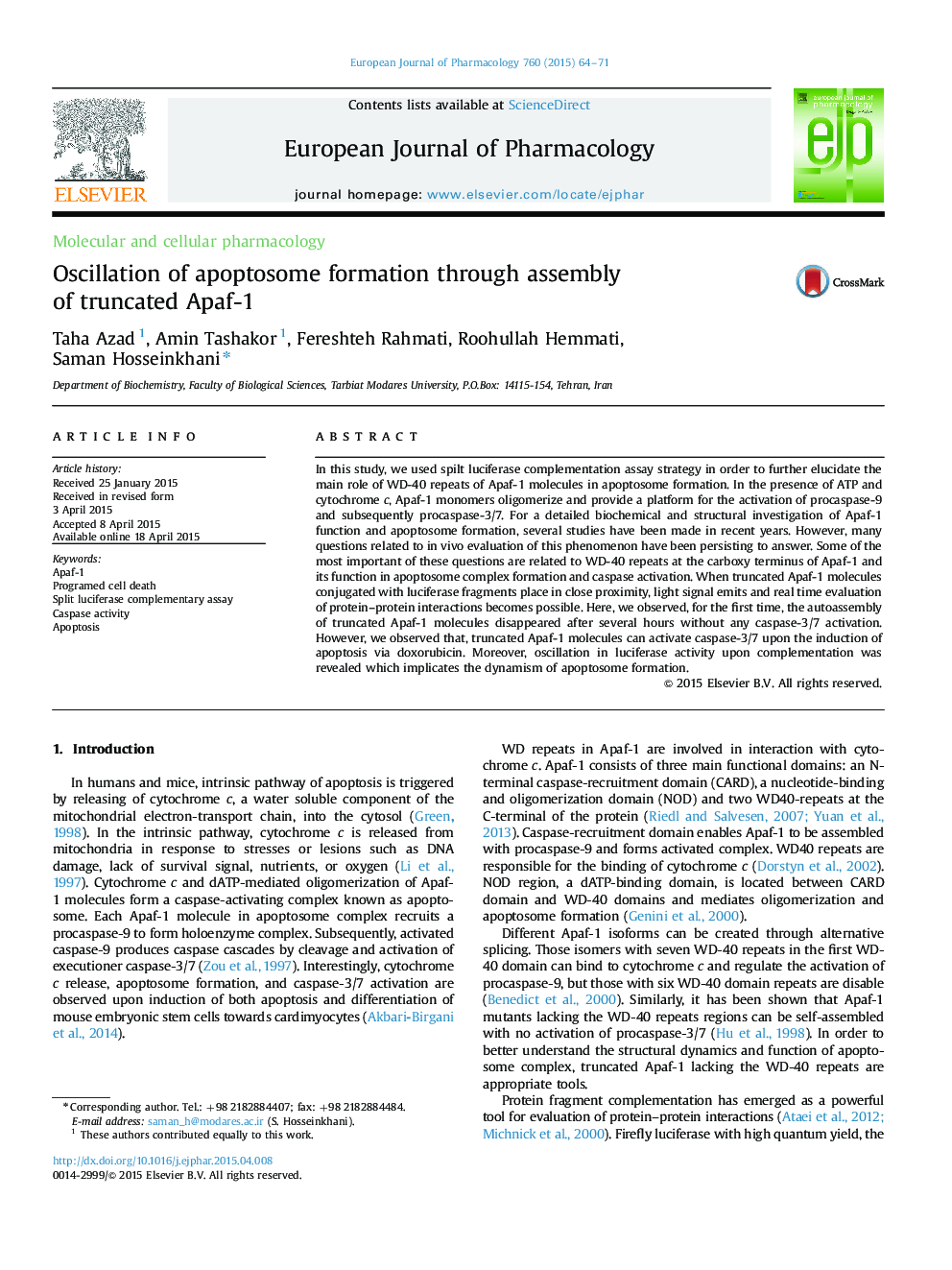| Article ID | Journal | Published Year | Pages | File Type |
|---|---|---|---|---|
| 2531429 | European Journal of Pharmacology | 2015 | 8 Pages |
In this study, we used spilt luciferase complementation assay strategy in order to further elucidate the main role of WD-40 repeats of Apaf-1 molecules in apoptosome formation. In the presence of ATP and cytochrome c, Apaf-1 monomers oligomerize and provide a platform for the activation of procaspase-9 and subsequently procaspase-3/7. For a detailed biochemical and structural investigation of Apaf-1 function and apoptosome formation, several studies have been made in recent years. However, many questions related to in vivo evaluation of this phenomenon have been persisting to answer. Some of the most important of these questions are related to WD-40 repeats at the carboxy terminus of Apaf-1 and its function in apoptosome complex formation and caspase activation. When truncated Apaf-1 molecules conjugated with luciferase fragments place in close proximity, light signal emits and real time evaluation of protein–protein interactions becomes possible. Here, we observed, for the first time, the autoassembly of truncated Apaf-1 molecules disappeared after several hours without any caspase-3/7 activation. However, we observed that, truncated Apaf-1 molecules can activate caspase-3/7 upon the induction of apoptosis via doxorubicin. Moreover, oscillation in luciferase activity upon complementation was revealed which implicates the dynamism of apoptosome formation.
